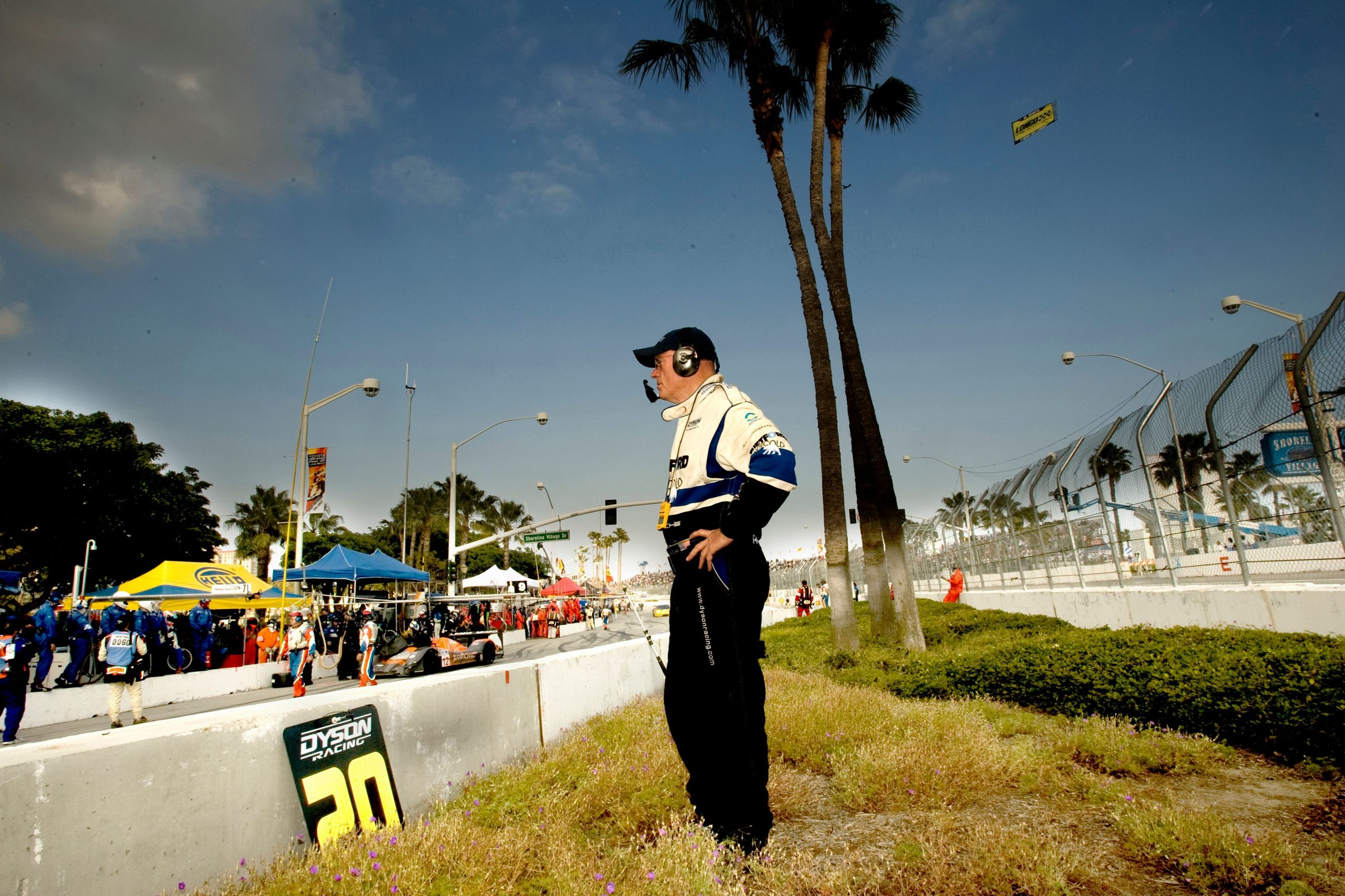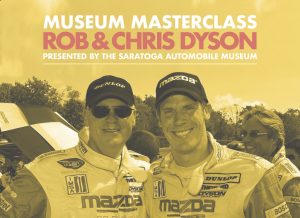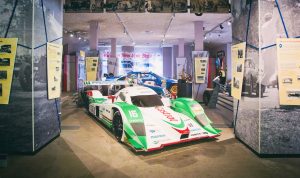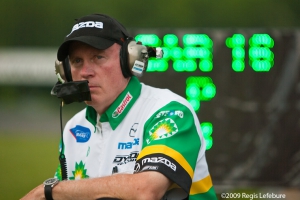Dyson Racing is celebrating their 30th anniversary in professional sports car racing this year. Half of those years were in the American Le Mans Series from its inception in 1999 through its final race at the Petit Le Mans in October. Over that time, Dyson Racing has five driver and team championships, nine overall wins, seventeen class wins, twenty-five overall poles, thirty-four class poles, forty-four overall podiums and forty-two class podiums to its credit. At the series’ last race, Rob Dyson reflected on the ALMS era:
Your best memories as a team owner?
“The first ALMS drivers’ championship with Elliott Forbes-Robinson in 1999 was one of the high points. I remember when we started the last race of that year at Las Vegas: James Weaver was gridded eighth in the #16 car he shared with Elliott. James went into the first turn in third place and I said right away, ‘we have a legitimate shot at winning the championship.’ We maintained that position and Elliott was crowned the first champion of the ALMS. Interestingly, coming into 1999, we weren’t sure if we were going to run the full ALMS as we were also running in the USRRC Can-Am the same season. But after we won the Daytona 24 Hours for the second time, we went to Sebring in ‘99 for the first ALMS championship event and we came away leading the standings. Elliott was actually originally signed on a race-to-race basis with us in the ALMS, but as EFR was the highest placing guy at Sebring, we continued running two cars in the series. We kept recording great results with Elliott’s #20 car, so we went, ‘Elliott is our horse, let’s ride him.’ So everyone formed in and got behind Elliott, and we took the whole ALMS that year one race at a time, and just kept scoring consistently. With two races to go, Elliott had a real shot at clinching it so we decided to go for it and things worked out beautifully at Vegas.
“I also look back with pride when we won at Sears Point with our little buzz bomb MG in 2003. We took on the might of the factory Joest Audi and beat them. It was the first time a P675 car beat a P900 and we did something that much bigger teams and manufacturers had failed to do by beating the R8 head-to-head. My son Chris winning the title that same year was a special one, too. And then there was that great drive Chris had at Portland in 2004 with J.J. Lehto in the Audi right behind him for the first part of the race. Chris came into the pits and the engine did not restart and we lost time replacing the coil. But J.J. was at his peak then and is one of the most phenomenal sports car drivers, and Chris had kept him at bay for nearly two hours. It underlined our championship success the year before and established him as a top guy in the series.
“Also the championship year we had in 2011 when we took home five titles. That was a lot of fun. It was a year of fundamentally executing. We did not get a single penalty the whole year and finished virtually every race lap. That was an exceptional year. You know, one of the main things that stands out from all this is all the hot rodding we did – all the different engines and different engine configurations. For most of the last decade nearly every race we’ve done were all with our own (AER) engines. You take a look at the grid this year and we are the only race team, other than the factory Porsche, Ferrari and BMW teams, that is running its own engine. We design, build, and run our own engines. There are not a lot of race teams that can say that. Even F1 teams, other than the OEM teams do not run their own in-house engines. That was something that was pointed out to me a couple years ago and I have to say it was eye-opening when someone brought that up to me. We did it because first we wanted the control and secondly, it was interesting and made it more fun. But I think overall, when I look back, the evolution of the race team is what stands out. I think about what we were doing then compared to what we are doing now. The level of sophistication that we have now in our chassis and the level of sophistication we have in our engines and all the data and technology we deal with, has really changed from fifteen years ago and is really a plus.
What made the ALMS special as a series?
“I think the ALMS were smart enough to understand that technology and diversity is a part of sports car racing and they allowed both to flourish. Diversity is the key to good racing. You look back on all the different engines, the different types of cars, the diversity of engineering solutions, and you had a series that never stood still and was always evolving. And that is why I got into racing. You were always trying something different. The fact you are on the pole is never enough – let’s try something else, and see if we can go even faster. That is part of racing that appeals to the hot rodder in me. This country is about diversity and that is what I liked about the ALMS – they embraced diversity and added some American sense to it, recognizing the fact you cannot throw cars away every year. The ALMS under IMSA leadership had a practical vein that ran through it and made it work so well over all these years.
“It has helped that there has been stability in the management and the ownership. There is a sense of belonging to a family. That started before the ALMS when it was John and Peg Bishop’s IMSA. You would check in every race to get your credentials from Peg. And John Bishop walked around the paddock all the time, not just where the big teams where, but also in the small paddock in the back where the guys were working on their own cars in tents. I remember those prize money checks always had Peg Bishop’s signature on it and sometime you were paid that afternoon.
“I look back at one of the common denominators all these years: the racer ethic. You do whatever it takes. You have to be ready when the flag falls. You have to be ready to compete and often against guys that are a lot bigger than you. But you can beat them – with your wits, your flexibility and your innovation. You can win against the biggest, because we have regularly done so and it is an awful lot of fun.
“You know, I have been very lucky, at every level. I am not the kind of person who spends a lot of time reflecting, but when I look back on it all, it is pretty neat.”



